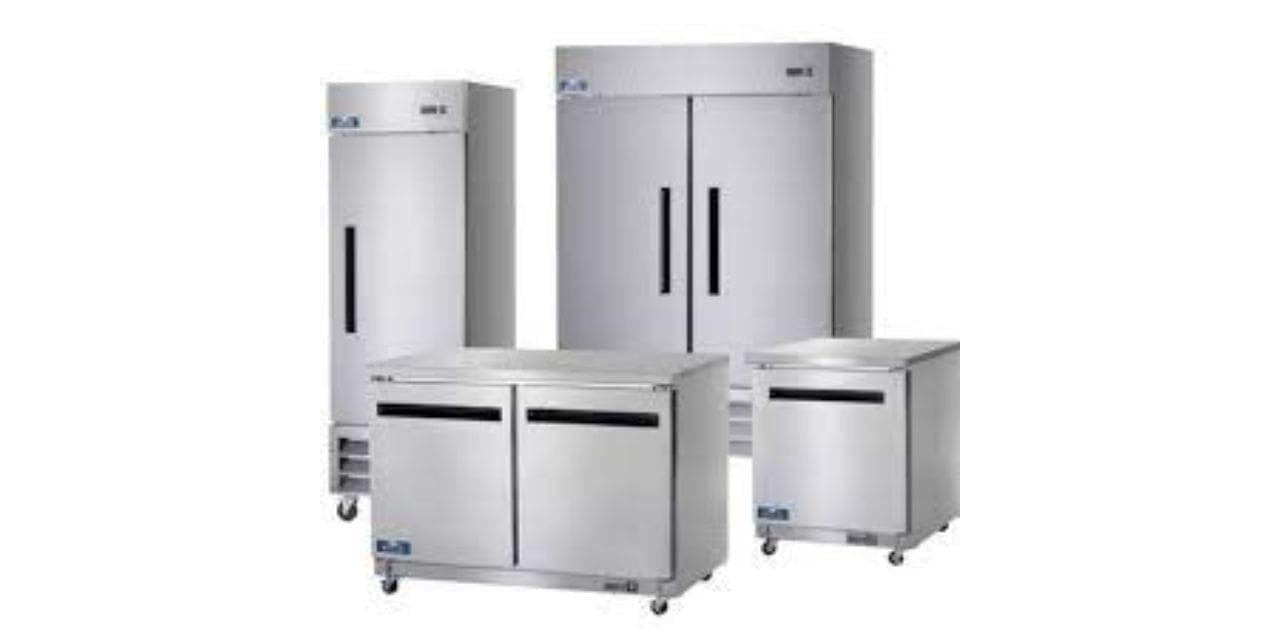The report “Commercial Refrigeration Market by Product Type, Refrigerant Type, Application (Food Service, Food & Beverage Production, Food & Beverage Retail), End Use (Supermarkets & Hypermarkets, Hotels & Restaurants, Bakeries), & Region – Global Forecast to 2028“, is projected to grow from USD 45.5 billion in 2023 to USD 60.5 billion by 2028, at a CAGR of 5.8%. The expansion of retail chains, supermarkets, and convenience stores on a global scale drive the demand for commercial refrigeration systems. The requirement of a reliable and efficient refrigeration infrastructure to preserve perishable goods and meet customer demands is expected to boost the market growth.
Browse
- 270 Market data Tables
• 43Figures
• 245 Pages and in-depth TOC on “Commercial Refrigeration Market – Global Forecast to 2028″
Some of the prominent key players are:
- Daikin (Japan)
- Johnson Controls (US)
- Carrier (US), Dover (US)
- Baltimore Aircoil Company (US)
- Blue Star Limited (India)
- De Rigo Refrigeration (Italy)
- Fogel (Guatemala)
- Hussmann (US)
- Imbera (Mexico)
- KMW (Germany)
- Mayekawa Mfg. Co., Ltd. (Japan)
- Runte (China)
- SCM Frigo (Italy)
- True (US)
- Viessmann (Germany)
- Voltas (India)
Make an Enquiry
Driver: Growing demand for frozen and processed food across word
The food processing sector requires equipment and solutions to produce, process, and distribute food to billions of households across the world as it services a multi-faceted value chain from farming to logistics. This sector has become increasingly important as the world’s population is on the rise, and dietary preferences are evolving, reflecting higher incomes and a shift to value-added products. The global demand for fresh and processed fruits and vegetables is increasing because of the changing food consumption habits of the urban population. The rise in disposable incomes in emerging economies has led to an increase in demand for fresh and processed fruits and vegetables. Frozen food products are increasingly becoming an integral part of daily diet across the world. Also, rapid urbanization in developing countries and rising living standards are fueling the demand for processed and packaged food, thereby leading to higher commercial refrigeration equipment sales, which is expected to propel the demand for commercial refrigeration equipment market during the forecast period.
The convenience stores segment is projected to account for the second fastest-growing segment
The advent of refrigeration has allowed convenience stores to store packaged foods & beverages for extended periods without spoilage. The rising number of convenience stores can be attributed to the increasing preference for packaged food items and beverages and the rising per capita income of consumers. The growth of the food preservatives market in China and India is also expected to contribute to the increased consumption of commercial refrigeration in convenience stores.
Asia Pacific is estimated to account for the largest segment of commercial refrigeration market during 2023 to 2028.
Governments in the Asia Pacific region were implementing stricter regulations and standards related to refrigerants. Such regulations are released with the aim of decreasing ozone depletion and greenhouse gas emissions. This led to a shift toward using more environmentally friendly refrigerants and phasing out hydrochlorofluorocarbons (HCFCs) and other harmful substances Increasing economic growth and substantial investments in the consumer appliances industry drive the demand for commercial refrigeration in the region. Rising demand for food storage equipment, increasing urbanization, and growing consumer electronics are also driving the market.

